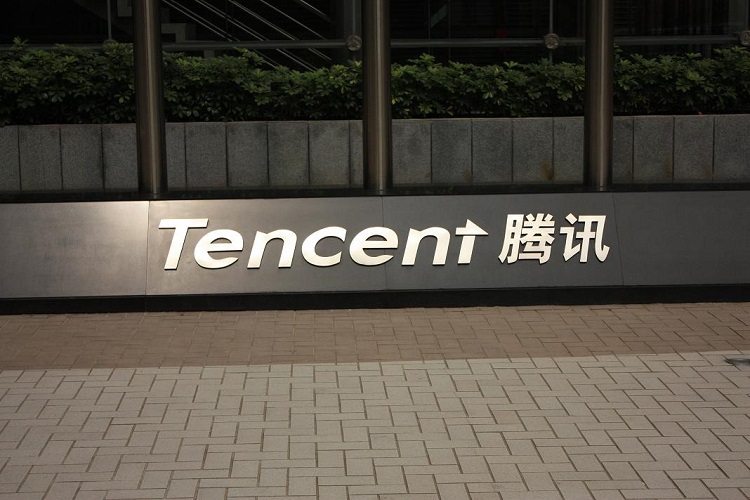Tencent recently released unaudited comprehensive performance of Q4 by December 31, and audited 2013 annual performance. In Q4, Tencent gross revenue reached 16.97 billion Yuan (USD 2.783 billion), with a 9% QoQ growth and a 40% YoY growth.
2013 Annual Performance Abstract:
- Gross revenue reached 60.437 billion Yuan (USD 9.913 billion), up 38% from a year earlier.
- Operating profit was 19.194 billion Yuan (USD 3.148 billion), increasing by 24% from a year earlier. The operating margins fell from 35% to 32%.
- Non-GAAP operating profit rose 22% to 20.768 billion Yuan (USD 3.406 billion); the non-GAAP fell from 39% to 34%.
- Profit attributable to shareholders was 15.502 billion Yuan (USD 2.543 billion), with a 22% YoY growth.
- Non-GAAP profit attributable to shareholders was 17.063 billion Yuan (USD 2.799 billion), up 19% from a year earlier.
- Basic earning per share reached 8.464 Yuan and diluted earning per share was 8.298 Yuan.
2013 Q4 Performance Abstract:
- Gross revenue reached 16.970 billion Yuan (USD 2.783 billion), with a 9% QoQ growth and a 40% YoY growth.
- Operating profit was 4.751 billion Yuan (USD 779 million), increasing by 24% compared to last year, but fell 1% compared to last month; the operating margins fell from 31% last quarter to 28%.
- Non-GAAP operating profit was 5.325 billion Yuan (USD 873 million), on par with Q3, increasing 23% from a year earlier ; the non-GAAP fell from 34% to 31%.
- Profit attributable to shareholders was 3.911 billion Yuan (USD 641 million), 1% higher than Q3 and 13% higher than a year earlier.
- Non-GAAP profit attributable to shareholders was 4.498 billion Yuan (USD 738 million), up 3% from Q3 and 11% from a year earlier.
- Basic earning per share reached 2.125 Yuan and diluted earning per share was 2.092 Yuan.
The revenue from value-added service rose 3% from last quarter to 11.932 billion Yuan (USD 1.921 billion), accounted for 70.3% of Q4 revenue.
Online advertising revenue increased 8% to 1.497 billion Yuan (USD 241 million), taking up 8.8% of Q4 revenue. The revenue of online video advertising and social network advertising grew, offsetting the influence of transferring Tencent online searching business to Sogou.
The revenue of e-commerce increased by 41% from last quarter to 3.324 billion Yuan (USD 535 million), taking up 19.6% of Q4 revenue. The growth was mostly caused by seasonal promotion activities.
Main Platforms Data:
- The monthly active IM accounts hit 808 million, down 1% from Q3 but up 1% from Q4 2012.
- Most concurrent IM accounts reached 180 million, with a 1% QoQ growth and a 2% YoY growth.
- Overall (domestic and abroad) WeChat monthly active accounts reached 355 million, 6% higher than last quarter and 121% higher than 2012.
- Qzone monthly active accounts increased to 625 million, up 0.3% from Q3 and 4% from Q4 2012.
- Most concurrent accounts of QQ Game platform reached 8.5 million, increasing by 4% from Q3 and decreasing 3% from 2012.
- Paid accounts of value-added service reached 88.6 million, on par with last quarter, but 15% lower than last year.
Main Business
QQ and Qzone maintained a leading position in China communication and social network. The number of user account was growing at a slower pace as user traffic was transferring from PC to mobile terminals. For QQ, monthly active accounts increased slightly by 1% to 808 million, and most concurrent accounts rose 2% to 180 million at the end of 2013. In 2013, Tencent significantly enlarged mobile QQ user group by improving user experience and enriched service such as game center. By the end of 2013, active QQ intelligent terminals accounts reached 426 million with a 74% YoY growth. For Qzone, monthly active accounts increased by 4% to 625 million. The activity and participation of mobile Qzone users both increased in 2013: monthly active Qzone intelligent terminal accounts increased by 63% to 416 million, and the number of pictures uploaded from mobile Qzone also increased.
Combined monthly active accounts of Weixin (WeChat domestic version) and WeChat reached 355 million by the end of 2013. WeChat expanded rapidly in China, and the user participation also rose in 2013. With new service such as game center, public accounts and WeChat payment, and the acceptance of Moment, WeChat was changing from a simple communication service to an integrated platform.
Tencent online advertising business kept expanding with the growth of Tencent media platform and social platform. The revenue of brand display advertising and performance display advertising both increased in 2013. For search advertising, the revenue fell because Tencent transferred its searching business to Sogou. Tencent believed Sogou’s merging with Soso would help improve its share of PC and mobile searching market.
The transaction volume and revenue of Tencent proprietary e-commerce business grew strongly. It was benefited from geographic coverage expansion, richness of goods and improving e-commerce infrastructure. As Tencent teamed up with Jingdong, the business, staff and asset of Tencent’s B2C platform (QQ Wanggou) and C2C platform (Paipai) and some of Yixun’s equity was transferred to Jingdong, while Jingdong got a call option on remaining equity of Yixun. Tencent and Jingdong would cooperate in online payment service and other fields.
